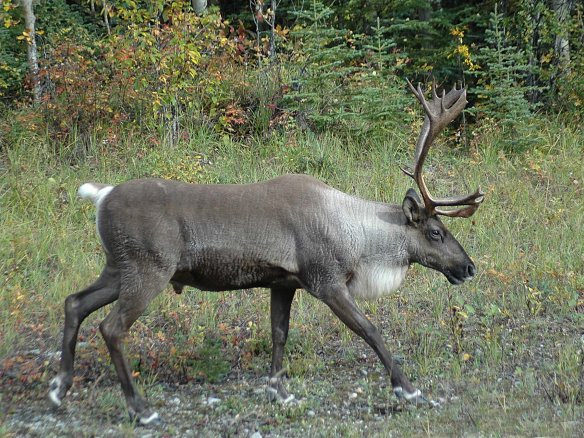Over the past 50 years, the development of the oilsands has changed the face of Alberta, driving innovation and technology to make oilsands a reality. The oilsands are the third largest oil reserve on earth, and despite a cycle of boom and busts, contribute to the prosperity of the province. Industry, however, has not addressed many of the largest environmental impacts generated by the oilsands, and much work is still left to be done. This blog is part of a series where we look back at the last 50 years of the oilsands industry and shed light on a number of the remaining challenges. See Part 1 here, Part 2 here and Part 3 here.
Soon after the Great Canadian Oilsands’ first project was launched in 1967, Alberta formally realized it had a problem: woodland caribou were beginning to disappear from Alberta’s forests. Ineffective plans and policies to protect woodland caribou have come and gone over the life of Alberta’s oilsands. All failed because they didn’t safeguard the animal’s habitat.
Alberta’s woodland caribou decline is a story of unmanaged expansion. The oilsands and forestry industries developed at a rapid pace despite clear evidence we’d exceeded federally established acceptable levels of land disturbance. In the lower Athabasca, the oilsands exploded in the 2000s, while the impacts of poorly managed development were largely unabated. The consequence is woodland caribou herds declined a further 80 per cent since 2000.

Human disturbance is the main driver of collapsing populations. Although habitat destruction may bring to mind surface mining and forestry operations, one of the largest culprits in the Athabasca is in situ development. Ninety seven per cent of the oilsands are only recoverable through this method, which involves underground drilling but still requires massive land disturbance. Instead of open pit mining, in situ requires an expansive network of seismic lines and pipelines. These lines crisscross enormous tracts of Alberta’s boreal forest, breaking it up into a checkerboard of fragmented stands of trees and paths wide enough for industrial equipment to drive to remote sites. Many seismic lines have been left unrestored for decades without any rules to ensure how or if they are ever reclaimed. They act as highways for predators, such as wolves, which were previously unable to reach caribou in the dense forest. There are now more than 250,000 km of seismic lines in caribou ranges.
This month, the Government of Alberta is federally obligated to submit recovery plans for Alberta’s 12 herds, outlining a plan to ensure 65 per cent of each herd’s habitat is undisturbed. To be serious about protecting Alberta’s woodland caribou, these plans must include aggressive restoration plans to ensure seismic lines are cleaned up, and that restoration is paid for by the industry that created the problem.
The province must also draw a line in the oilsands and designate protected areas. In Northwest Alberta, the Government of Alberta has already signalled its promise to legislatively protect an area three times larger than Banff National Park. If the province follows through, that will secure significant habitat for four herds.
In the oilsands, the rules for developers to hold rights to oilsands leases have historically driven significant disturbance in caribou habitat. There are 5,200 oilsands leases currently held in Alberta. Historically, only a few hundred leases have been industrially viable and developed for oilsands extraction. As there are many non-viable oilsands leases, we can ensure that caribou conservation is prioritized by allowing such leases to expire and legislate permanent protected areas for the species in each range.
The first 50 years of oilsands development saw scant attention to protecting habitat for caribou and other species at risk. Hopefully the next 50 will see a focus on addressing these historic wrongs and a stronger commitment to responsible development.
Oilsands at 50 Series – The Real Cost of Development
Part 1: The Real GHG trend: Oilsands among the most carbon intensive crudes in North America
Part 2: Tailings ponds: The worst is yet to come
Part 3: Fifty years of oilsands equals only 0.1% of land reclaimed









